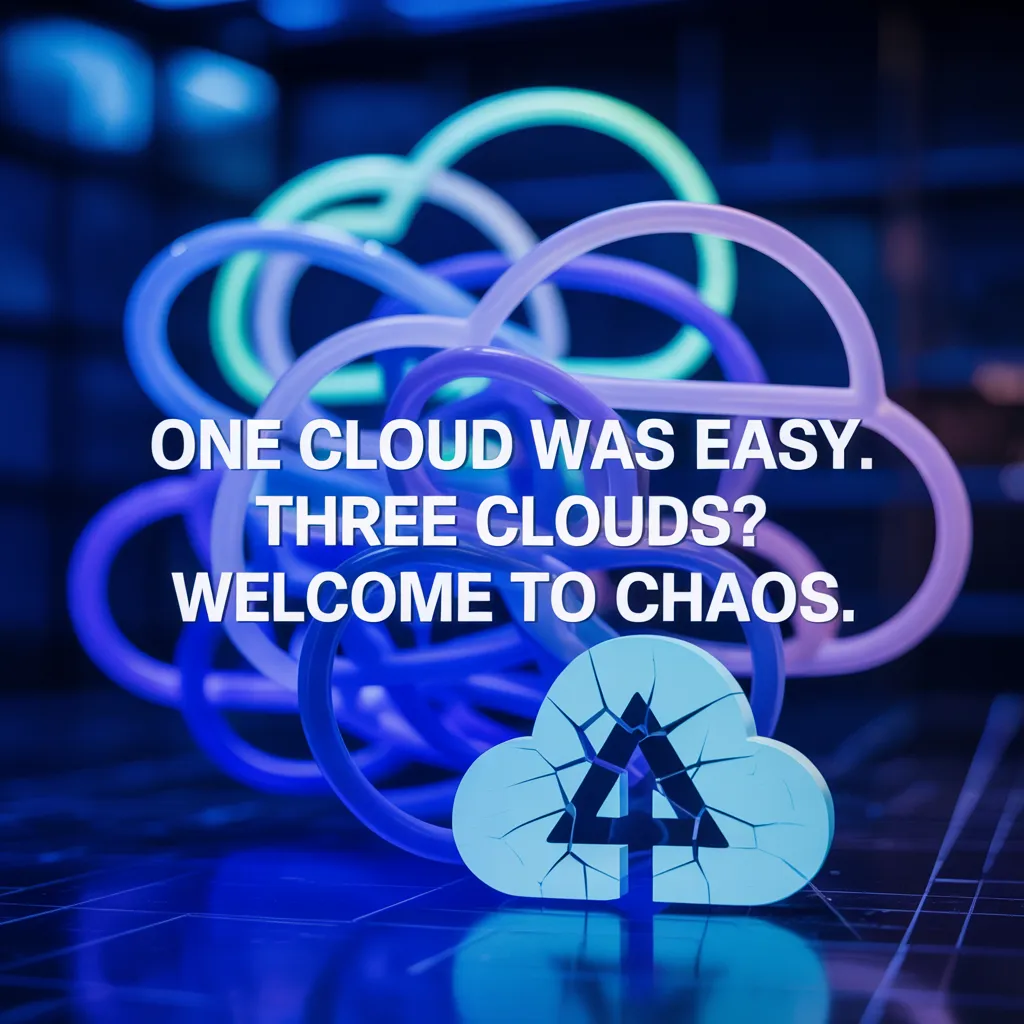
Multi-Cloud Security Gaps: Why Your Traditional IT Strategy Is Failing in 2025

☁️ Multi-Cloud Security Gaps: Why Your Traditional IT Strategy Is Failing in 2025
"In a world of hybrid work and hybrid clouds, your old-school IT playbook is dead weight."
It’s 2025, and the days of single-vendor cloud environments are toast. Healthcare networks are sharing data across AWS and Azure. Manufacturers are juggling OT/IT workloads across Oracle Cloud and Google. Finance firms are leveraging SaaS stacks layered on top of private cloud infrastructure — and wondering why everything feels like a security ticking time bomb.
Spoiler alert: it’s your outdated IT strategy.
Let’s dig into why traditional cybersecurity practices are falling flat in this new multi-cloud reality — and what you must do now to close the gaps before attackers do it for you.
🔥 Multi-Cloud = Multi-Problem
Here’s the painful truth: multi-cloud environments amplify every security flaw you already had — and introduce a few new ones.
You’re now managing:
Different IAM models across AWS, Azure, Google Cloud
Conflicting patching timelines across cloud-native and hybrid apps
Disconnected monitoring tools that don’t talk to each other
Compliance obligations across multiple jurisdictions and data silos
If that sounds messy, it's because it is. And threat actors know it.
The Result?
🔓 Gaps in visibility: Threats hide in the seams between clouds.
🕳️ Missed patches: Because who’s tracking versions across 3 vendors?
🎭 Inconsistent identities: Your dev in AWS might be a ghost in Azure.
⏱️ Delayed response times: Too many dashboards, not enough clarity.
🧠 Top 10 Cybersecurity Trends of 2025 (And Why They Matter in Multi-Cloud)
AI-Augmented Attacks – LLMs are being used by attackers to probe multi-cloud APIs faster than humans can respond.
Zero Trust Becomes Law – Regulations in healthcare and finance are now requiring microsegmentation and identity-first access controls.
Supply Chain Compromise – A breach in your cloud partner = a breach in your world. And they're not always telling you.
Multi-Cloud Mesh Security – Gartner’s hot term is more than a buzzword; it’s the future of unified cloud defense.
Shadow Cloud IT – Business units deploying SaaS tools with zero IT oversight. Hello, unmonitored PHI and financial data.
Quantum-Ready Encryption – Organizations are prepping crypto agility now to future-proof across cloud environments.
Cloud-Native SIEM & XDR – If your detection isn’t cloud-native and multi-cloud aware, it’s already behind.
API Security Becomes Critical Infrastructure – Most multi-cloud breaches now stem from unsecured or poorly authenticated APIs.
Cyber Insurance Rewrites – Insurers are tightening payouts unless firms show unified cloud security posture and response playbooks.
Compliance Overload – HIPAA, PCI-DSS, GLBA, GDPR, and now AI-specific regulations? Good luck doing this manually.
🏥 Why This Hits Hard in Healthcare, Finance, and Manufacturing
Healthcare
Issue: PHI scattered across EMR systems, telehealth platforms, and research clouds.
Risk: HIPAA violations, ransomware attacks, and patient safety at stake.
Finance
Issue: Transactional workloads split across cloud-native fintech and legacy infrastructure.
Risk: GLBA non-compliance, data breaches, and reputational damage.
Manufacturing
Issue: OT/IT convergence on multi-cloud platforms with outdated ICS.
Risk: IP theft, downtime, and safety incidents from cyber-physical threats.
🛠️ Why Traditional IT Strategy Fails in Multi-Cloud
Legacy thinking says:
“We'll just extend our firewall policies.”
“We'll monitor through a centralized SIEM.”
“We'll let each cloud team handle its own patching.”
🚫 That doesn’t cut it in 2025.
Today, security needs to follow the data — not the device, network, or static perimeter.
You need:
Unified IAM with conditional access rules across cloud tenants
Automated compliance enforcement across workloads
Cross-cloud patch orchestration and audit trails
Centralized visibility with contextual alerting across environments
🧬 What’s the Fix? You Need a Modern, Multi-Cloud Security Strategy
Here’s what we implement through Elliptic Systems’ Secure AI + Multi-Cloud Security Blueprint:
Cloud Inventory & Mapping
Identify all cloud assets, accounts, shadow IT, and API endpoints
Zero Trust Access Framework
Implement identity-first access policies, MFA, and session-based permissions
AI-Augmented Threat Detection
Use AI/ML to correlate anomalies across multiple cloud platforms
Compliance Automation
Automate HIPAA, GLBA, and PCI-DSS controls across environments
Unified Logging & Monitoring
Deploy cross-cloud SIEM/XDR with centralized event normalization
Incident Response Playbooks
Tailored to each cloud provider’s tooling and escalation paths
Cloud Security Posture Management (CSPM)
Continuous scanning and remediation recommendations across all clouds
🚀 Security That Doesn’t Scale Is a Liability
In 2025, your firm’s data lives everywhere — and attackers know it. What used to be a manageable IT perimeter is now a galaxy of cloud services, SaaS tools, remote users, and API connections. If your security can’t keep up, it’s not a strategy — it’s a liability.
It’s time to stop duct-taping old solutions to new problems.
👉 Get proactive. Schedule a consultation with Elliptic Systems to secure your multi-cloud environment before someone else exploits it.
The future is hybrid, distributed, and always on. Your security should be too.
🔗 https://itpentests.com/schedule
